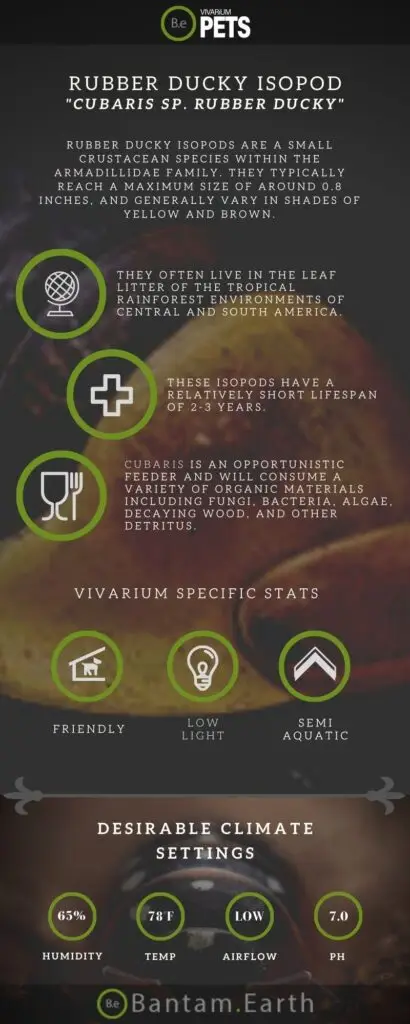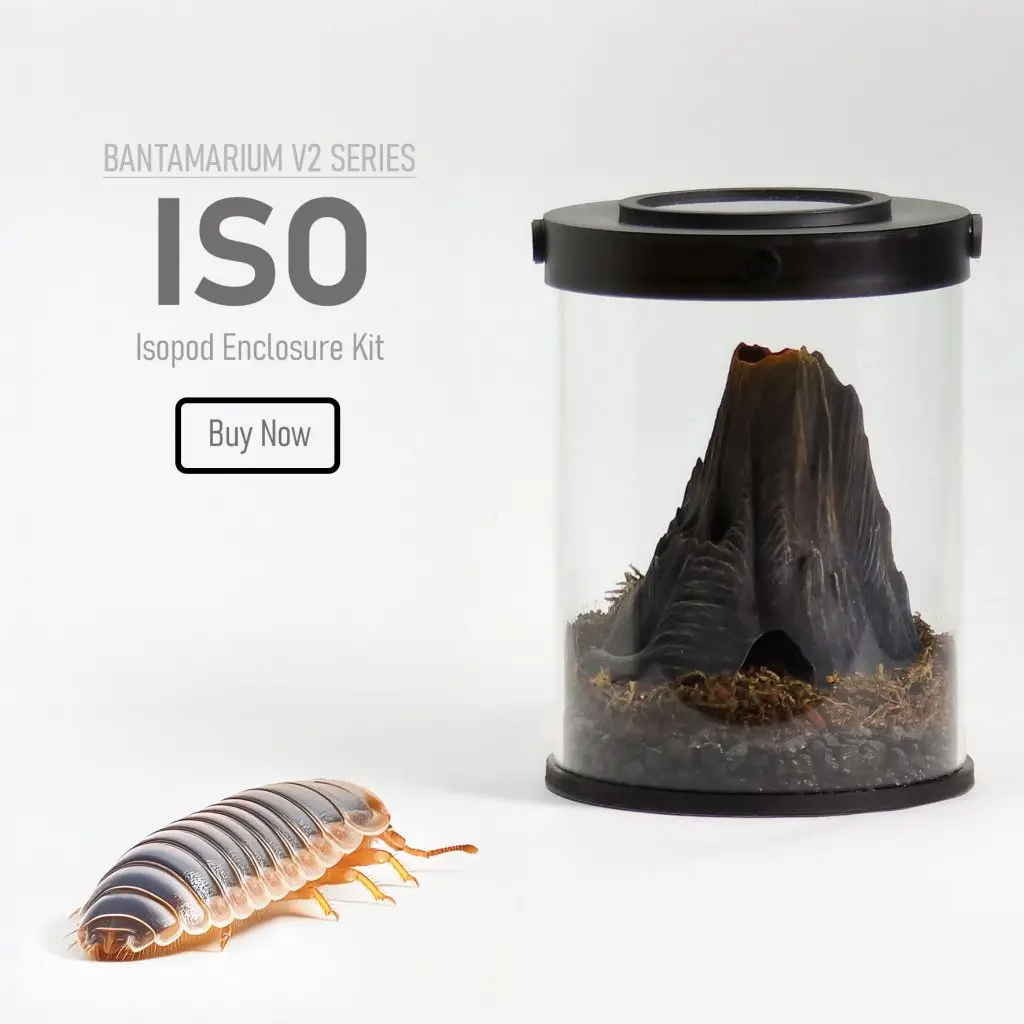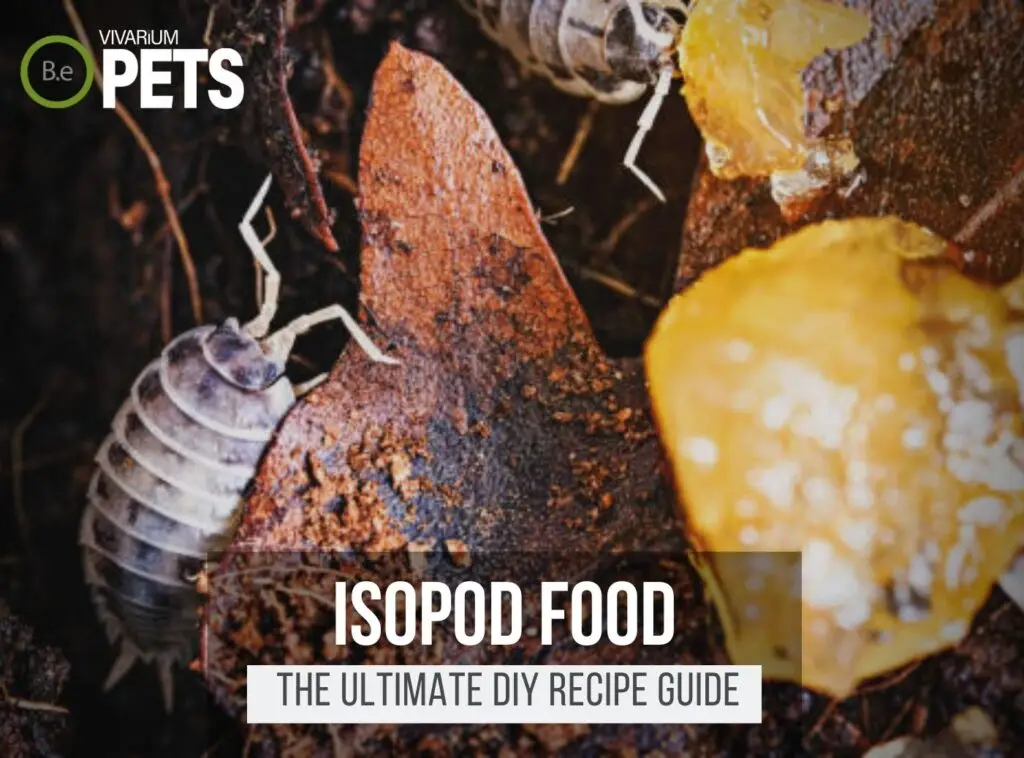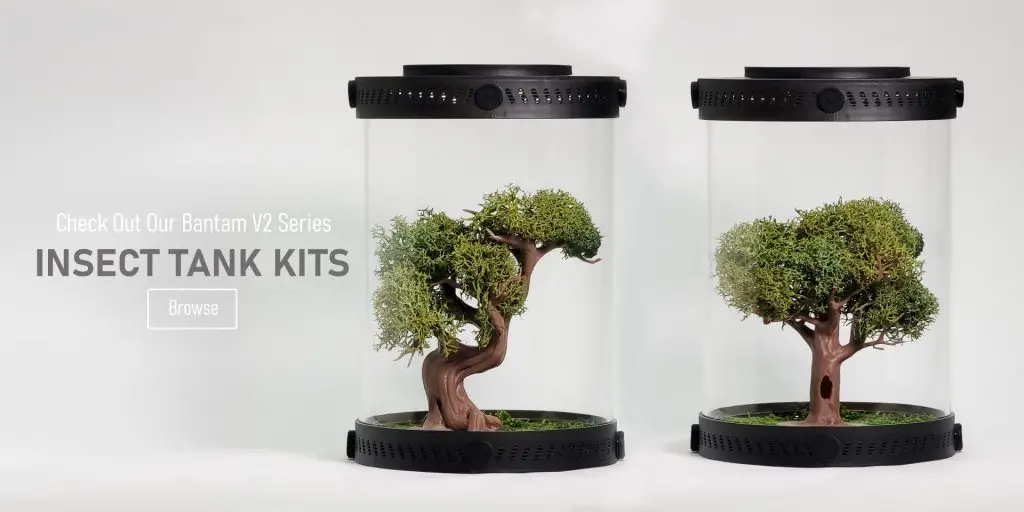Rubber ducky isopods are some of the most unique and eye-catching cubaris isopods on the planet.
Their playful name and signature bright yellow color make them an incredibly attractive pet for paludariums, terrariums, or just about any other type of enclosure.
Learn more about rubber Cubaris sp. ‘Rubber Ducky’ and how you can care for them with this comprehensive guide!
| Characteristics: | |
|---|---|
| Common Name | Rubber Ducky Isopods, Duckbill Isopods |
| Family Name | Armadillidae |
| Scientific Name | Cubaris sp. 'Rubber Ducky' |
| Use | Cleaning, Aerating Soil, Feeders |
| Temperament | Non-aggressive |
| Lifespan | 2-3 Years |
| Diet | Detritivore |
| Adult Size | 2 cm |
| Breeding Type | Egg Layer |
| Care Level | Easy |
| Minimum Tank Size | 10 Gallons |
| pH | 6.0-8.0 |
| Hardness | Soft |
| Temperature | 70-85°F |
Table Of Contents:
ToggleWhat Are Rubber Ducky Isopods?
Rubber Ducky Isopods are a small crustacean species within the Armadillidae family.
They often live in the leaf litter of the tropical rainforest environments of Central and South America.
Rubber Ducky Isopods get their common name from their signature bright yellow rubber ducky coloring and strikingly similar faces.
In nature, they feed on organic matter, and they can be a great addition to any paludarium or terrarium containing other semi-aquatic or terrestrial creatures.
Create an ideal habitat for your Rubber Ducky Isopods with our Customizable Isopod Terrarium Kits, which include everything you need to get started.
What Do Rubber Ducky Isopods Look Like?
Rubber Ducky Isopods typically reach a maximum size of around 0.8 inches and generally vary in shades of yellow and brown.
They are oval-shaped and have a total of seven segments, with seven pairs of legs each. Two of their legs have claws for burrowing and navigation.
They also have two antennae that help them sense their surroundings, along with two short projections on their head called cerci, which are also sensory organs.
They have a distinctive bright yellow color, which gives them their rubber ducky-like appearance.
Benefits Of Using Rubber Ducky Isopods
Rubber Ducky Isopods bring a unique charm to any terrarium or paludarium. Not only are they beautiful and aesthetically pleasing, but they also offer a variety of benefits to their environment.
As decomposers, Rubber Ducky Isopods help to break down organic matter and recycle nutrients back into the terrarium soil.
They are also essential for controlling potential pest populations, such as springtails. They generally compete for the same source of food so being a larger species will keep being easy for them to get first pickings.
Furthermore, having these fascinating creatures as part of your vivarium can give you an added sense of satisfaction, as their care and breeding are both rewarding and satisfying.


Rubber Ducky Isopods Facts
Rubber ducky isopods (Cubaris sp.) are found in Thailand. they are attractive pets with a mellow temperament, a detrivorous diet, and a 1-2 year lifespan in captivity.
With patience and proper care, breeding is relatively easy and the eggs can hatch within two weeks.
Habitat
Rubber ducky isopods have been observed in their natural habitat in the tropical regions of Thailand. They inhabit the lowland rainforest, living among the foliage on the rainforest floor.
They are most active at night, emerging from their hiding places to scavenge for food and moisture.
The rainforest environment they live in is dense with foliage, providing them with plenty of humidity, shade, and protection.
The temperatures range from around 20 to 30 degrees Celsius (68 – 86F) during the day and range between 18 to 22 degrees Celsius (64 – 72F) at night.
The rainy season is especially conducive for the Rubber Ducky Isopod’s environment as it provides them with plenty of moisture, food, and protection from predators.
Replicate their natural habitat perfectly with our Bioactive Isopod Substrate Blend, designed to provide the ideal moisture and organic content for your isopods.
Diet
In their natural habitats, rubber ducky isopods feed on a variety of organic materials, including decaying fruits, leaf matter, fungi, and animal sources.
They are especially fond of consuming fruits that are on the brink of decay, such as overripe fruits and vegetables.
Temperament
Rubber ducky isopods are known for having a docile temperament, often appearing tame and calm when humans interact with them.
They will even interact with other animals in their tank, but they should always be separate so that they don’t fight.
They are also not known to attempt to escape out of their tank, so they are quite low maintenance in terms of security.
Rubber ducky isopods will interact with humans, but only if they are given a chance to get used to their environment first.
Over time, they can become quite playful, often willing to be held in one’s hand or rolled around on the surface of the tank.
They can even climb up objects and remain on one’s hand for minutes at a time.
Lifespan
Rubber ducky isopods have an average lifespan of 1 to 2 years in captivity, but when given proper care, they can live up to 4 years.
During their lifetime, they will pass through up to six molting cycles before they reach adulthood. This molting process begins shortly after hatching.
This continues until they reach maturity, at which point they will remain in the same exoskeleton without the need to molt.
At the start of their lifespan, rubber ducky isopods will be colored white, but as they reach adulthood, they will begin to display their signature bright yellow hue and unique patterned body.
Once they reach their full size, they will remain dormant throughout the winter months, before beginning a new and more active breeding cycle in the spring.
Breeding
Breeding rubber ducky isopods can be tricky but with patience, it can be done over only a few weeks.
Females will be ready to breed after about 3 months, at which point they can begin laying eggs on the substrate of their tank or in small crevices.
For successful breeding to take place, the temperature of the tank must be warm and humid.
The temperature should be kept between 25 to 28 degrees Celsius and the humidity should be kept at a range of 75-90%.
It’s also important to note that rubber ducky isopods generally reach sexual maturity after 8 to 12 months.
Once the eggs are laid, they will hatch within two weeks and the little isopods will start growing immediately. At this point, they should be fed a diet of leafy greens and other organic matter.
This will help them to grow quickly and they should reach sexual maturity within just a few months.
Where To Find Rubber Ducky Isopods
Rubber ducky isopods can be found in their native habitat of Southeast Asia, but they’ve also made their way to pet stores in the US, Canada, and the UK.
If you’re planning on catching these isopods in the wild, you can find these isopods at nightfall while they’re active and feeding.
The best way to catch them is to place a piece of carpet on the ground and wait for them to crawl onto it, allowing you to easily pick them up.
Be sure to place them in a bucket or container with a lid, filled with a substrate and moisture-rich food for them to feed on.
Rubber Ducky Isopods Care
Rubber Ducky Isopods must be cared for like any other species of isopod.
Keep them in an enclosure with temperatures ranging from 70°F to 80°F and a humidity level of around 70 to 80%.
Provide ample leaf litter and decaying fruit for them to forage through. Ensure there is always fresh, clean water available.
Regularly monitor tank conditions to avoid any health problems or diseases.
Tank Requirements
When it comes to providing an ideal tank for your Rubber Ducky Isopods, you’ll want to make sure it is a warm and humid environment.
The water in the tank should have a pH of 8.0 to 8.5 with a hardness of 10° to 15° DH. The temperature should stay between 78° to 86°F (25° to 30°C).
Isopod substrate should always be made up of a combination of coco coir and peat moss. The tank should be adequately lit but make sure none of the terrarium lights are too strong or directly shining on the isopods.
What Do Rubber Ducky Isopods Eat?
Rubber ducky isopods need the right kind of food to help them grow and stay healthy. Here are some suggestions on what to feed them:
- Leaf litter – Dried and broken down leaf litter provides organic material for the isopods to forage through.
- Fruits and vegetables – Soft fruits such as blueberries, strawberries, apples, and bananas make perfect treats for rubber ducky isopods. Vegetables like sweet potatoes, carrots, and squash should also be given in small quantities.
- Decaying feeder insects – Feeder insects such as crickets, mealworms, and wax worms make occasional snacks for rubber ducky isopods.
- Fish flakes – Commercial fish food can also be used as a supplement for additional minerals.
If you’re more of an avid hobbyist like myself, be sure to check out my ultimate DIY Isopod food guide. I give a more in-depth explanation of the best foods and my favorite recipe.
Best Tankmates For Rubber Ducky Isopods
Although rubber duckies can be kept alone or in a small group, they do incredibly well when paired with other tankmates.
Animals such as snails, springtails, and even small millipedes are all suitable companions for Rubber Ducky Isopods.
These are particularly beneficial tankmates, as they will help to keep their environment clean and free of debris.
The addition of other species may also be encouraged, as it can help to reduce stress and allow for a more natural exploration of the environment.
Conclusion
Overall, Rubber Ducky Isopods (Cubaris sp.) are a fascinating type of isopod that make great pets!
With their signature bright yellow color and playful name, they add a unique charm and personality to any enclosure.
With the right care and maintenance, rubber ducky isopods are sure to put a smile on your face.
Create the ideal habitat for your isopods with our species-specific soil mixes and Insect Enclosure Kits. These products provide everything you need for a successful and thriving isopod colony.
Frequently Asked Questions
Rubber Ducky isopods are so expensive because they are relatively rare and slow–growing in the pet trade, so they are not as readily available as many of the other isopods varieties on the market. As they become increasingly popular, their high demand often pushes the price up.
No, rubber ducky isopods are not difficult to care for. They are one of the easier isopods to keep in captivity and require the same basic elements as other isopod species: moist substrate, plenty of hiding spots, and a consistent temperature and humidity level. They should be fed a diet of organic fruits and vegetables as well as bits of fish food or other commercial isopod dietary supplements.
No, Rubber Ducky isopods are not rare. They are widely available, often being sold as pets or feeders.






